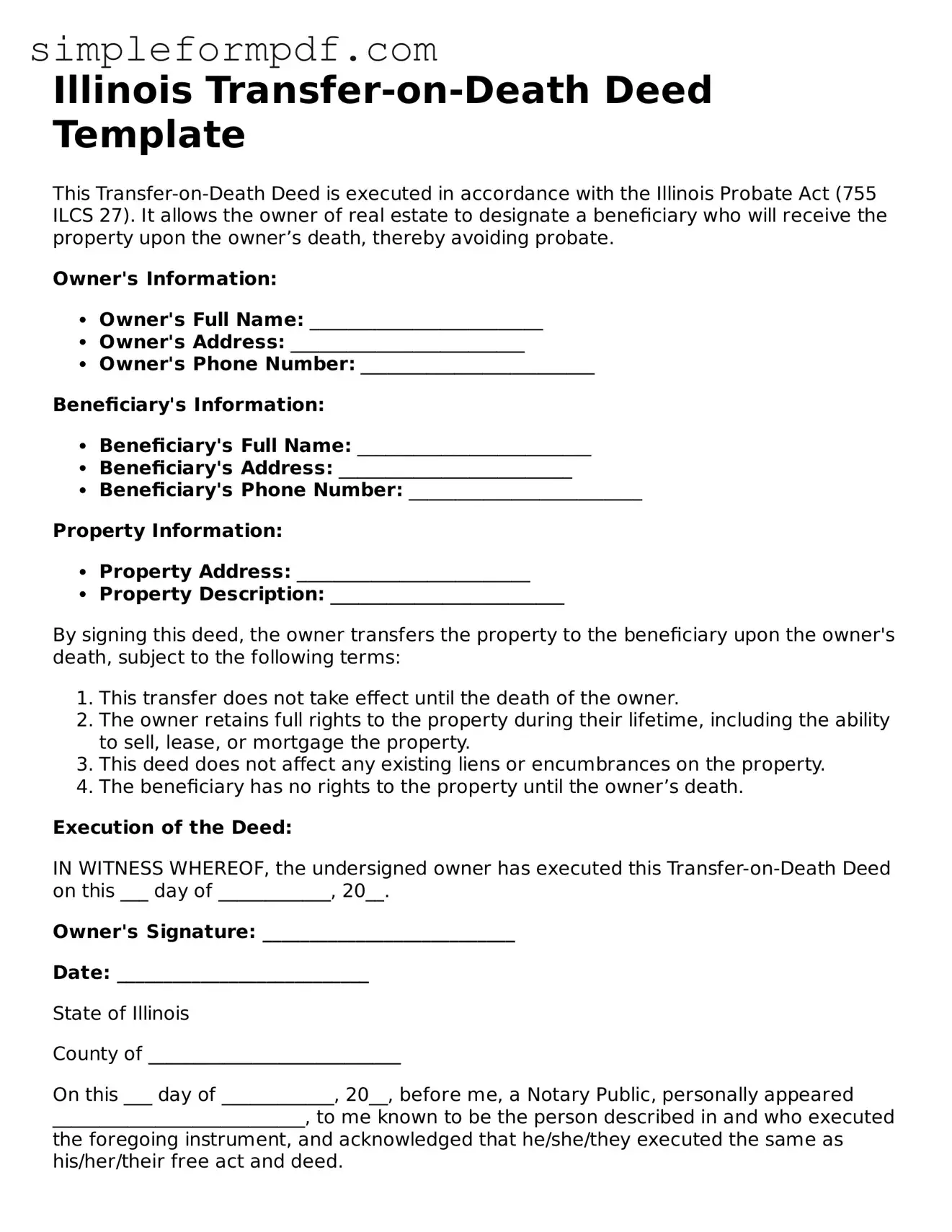Illinois Transfer-on-Death Deed Template
This Transfer-on-Death Deed is executed in accordance with the Illinois Probate Act (755 ILCS 27). It allows the owner of real estate to designate a beneficiary who will receive the property upon the owner’s death, thereby avoiding probate.
Owner's Information:
- Owner's Full Name: _________________________
- Owner's Address: _________________________
- Owner's Phone Number: _________________________
Beneficiary's Information:
- Beneficiary's Full Name: _________________________
- Beneficiary's Address: _________________________
- Beneficiary's Phone Number: _________________________
Property Information:
- Property Address: _________________________
- Property Description: _________________________
By signing this deed, the owner transfers the property to the beneficiary upon the owner's death, subject to the following terms:
- This transfer does not take effect until the death of the owner.
- The owner retains full rights to the property during their lifetime, including the ability to sell, lease, or mortgage the property.
- This deed does not affect any existing liens or encumbrances on the property.
- The beneficiary has no rights to the property until the owner’s death.
Execution of the Deed:
IN WITNESS WHEREOF, the undersigned owner has executed this Transfer-on-Death Deed on this ___ day of ____________, 20__.
Owner's Signature: ___________________________
Date: ___________________________
State of Illinois
County of ___________________________
On this ___ day of ____________, 20__, before me, a Notary Public, personally appeared ___________________________, to me known to be the person described in and who executed the foregoing instrument, and acknowledged that he/she/they executed the same as his/her/their free act and deed.
Notary Public Signature: ___________________________
My Commission Expires: ___________________________
